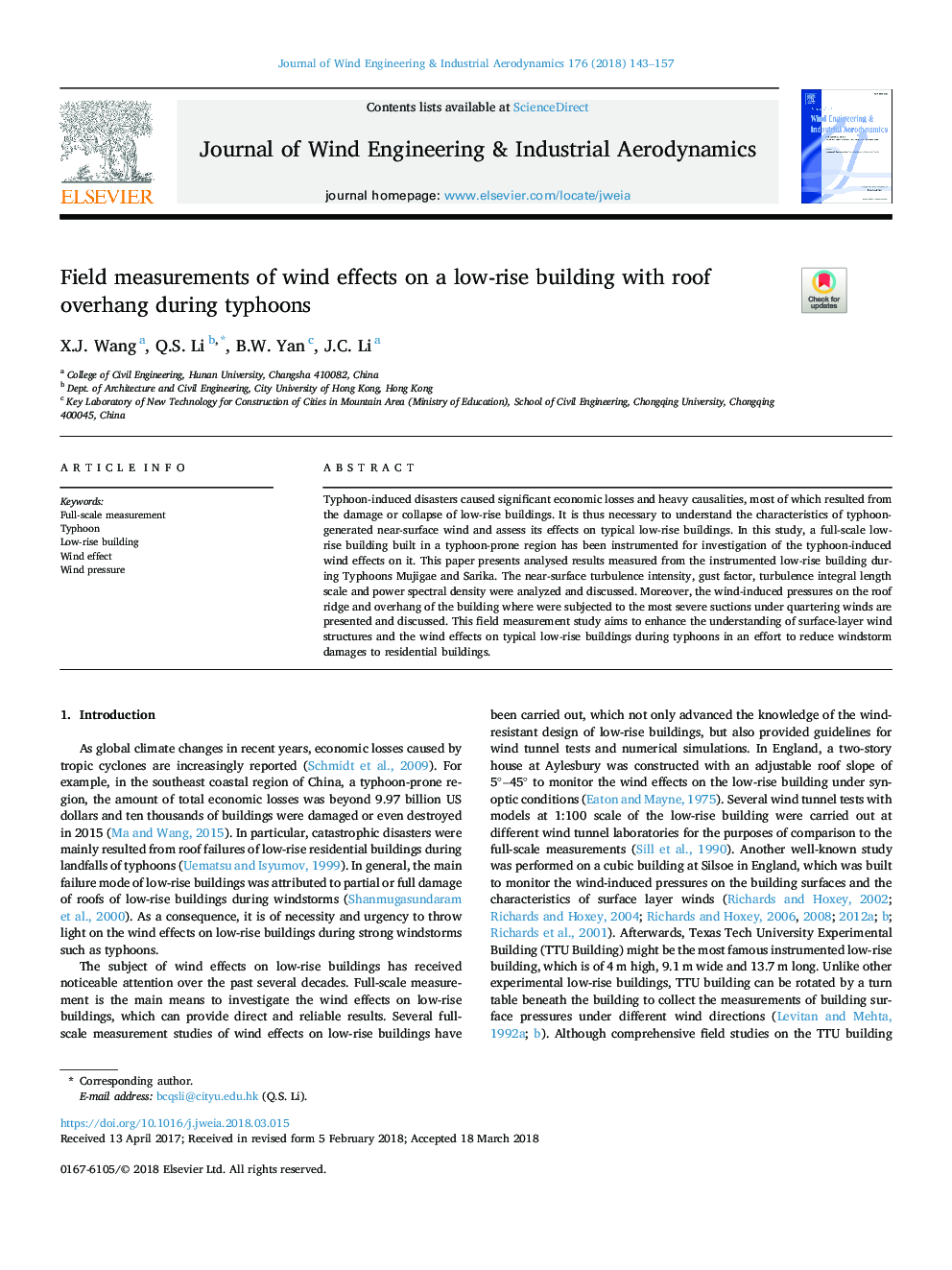| Article ID | Journal | Published Year | Pages | File Type |
|---|---|---|---|---|
| 6756904 | Journal of Wind Engineering and Industrial Aerodynamics | 2018 | 15 Pages |
Abstract
Typhoon-induced disasters caused significant economic losses and heavy causalities, most of which resulted from the damage or collapse of low-rise buildings. It is thus necessary to understand the characteristics of typhoon-generated near-surface wind and assess its effects on typical low-rise buildings. In this study, a full-scale low-rise building built in a typhoon-prone region has been instrumented for investigation of the typhoon-induced wind effects on it. This paper presents analysed results measured from the instrumented low-rise building during Typhoons Mujigae and Sarika. The near-surface turbulence intensity, gust factor, turbulence integral length scale and power spectral density were analyzed and discussed. Moreover, the wind-induced pressures on the roof ridge and overhang of the building where were subjected to the most severe suctions under quartering winds are presented and discussed. This field measurement study aims to enhance the understanding of surface-layer wind structures and the wind effects on typical low-rise buildings during typhoons in an effort to reduce windstorm damages to residential buildings.
Related Topics
Physical Sciences and Engineering
Energy
Renewable Energy, Sustainability and the Environment
Authors
X.J. Wang, Q.S. Li, B.W. Yan, J.C. Li,
